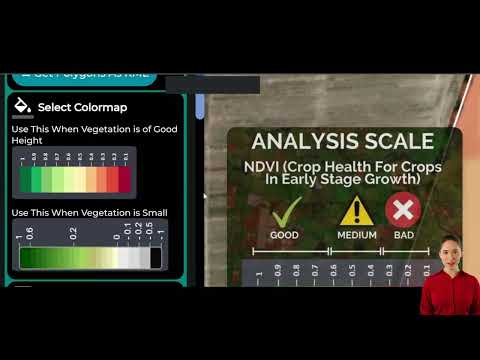Mastering Summer Sheep Health: Expert Guide to Barber’s Pole Worm Management in South Australia

“Barber’s Pole Worm can cause up to 30% reduction in sheep productivity in affected South Australian regions.”
Welcome to our comprehensive guide on mastering summer sheep health, with a particular focus on Barber’s Pole Worm management in South Australia. As we delve into this critical aspect of sheep parasite management, we’ll explore the unique challenges faced by sheep farmers in regions like Mallee, Yorke Peninsula, and the West Coast. Our goal is to equip you with the knowledge and strategies needed to maintain the health and productivity of your flock during the challenging summer months.
Understanding Barber’s Pole Worm: A Summer Menace
Barber’s Pole Worm, scientifically known as Haemonchus contortus, is a blood-feeding parasite that poses a significant threat to sheep health, especially during the warmer months in South Australia. This worm thrives in summer conditions, making it a persistent concern for sheep farmers across the state.
- Blood-feeding nature: Unlike other parasites, Barber’s Pole Worm feeds directly on the blood of its host, leading to severe anemia.
- Rapid reproduction: Female worms can lay up to 10,000 eggs per day, causing rapid infestations.
- Climate preference: Warm and moist conditions typical of South Australian summers favor its lifecycle.
Understanding the lifecycle and behavior of this parasite is crucial for effective management. We at Farmonaut recognize the importance of integrating this knowledge with advanced agricultural technologies to enhance sheep farming practices.
Recognizing the Signs: Subtle but Severe
One of the challenges in managing Barber’s Pole Worm infestations is recognizing the signs early. Unlike other worm infections, the symptoms can be subtle and easily overlooked.
- Anemia: Pale gums and eyelids are telltale signs of blood loss.
- “Bottle jaw”: Swelling under the jaw due to fluid accumulation.
- Reduced productivity: Decreased weight gain and wool growth.
- Lethargy: Sheep may appear weak and lag behind the flock.
Interestingly, scouring (diarrhea) is not typically associated with Barber’s Pole Worm infections, unlike other parasitic infestations. This absence of a common symptom can lead to misdiagnosis or delayed treatment.
The Importance of Early Detection
Early detection is key to managing Barber’s Pole Worm effectively. We recommend two primary methods for monitoring your flock:
- Worm Egg Counts (WEC): Regular fecal testing can indicate the level of infestation.
- Autopsies: In severe cases or sudden deaths, autopsies can confirm the presence of worms.
Implementing a routine monitoring program is crucial. Consider using Farmonaut’s precision agriculture tools to keep track of your flock’s health status efficiently. Our satellite-based farm management solutions can help you identify potential problem areas in your pastures that might be hotspots for parasite activity.
The Hidden Threat: Immature Worms
One often overlooked aspect of Barber’s Pole Worm management is the threat posed by immature worms. These developing parasites can cause significant damage before they reach the egg-laying stage.
- Immature worms feed on blood but don’t produce eggs, making them undetectable in standard WECs.
- They can cause severe anemia and productivity losses even before reaching maturity.
- Strategic drenching may be necessary to target these immature populations.
Understanding this hidden threat is crucial for developing a comprehensive management strategy. It underscores the importance of preventive measures and regular monitoring beyond just egg count tests.
Sustainable Grazing Practices for Parasite Control
Effective parasite management goes hand in hand with sustainable grazing practices. By implementing smart grazing strategies, we can reduce the risk of Barber’s Pole Worm infestations and promote overall flock health.
- Rotational Grazing: Regularly moving sheep to fresh pastures can break the parasite lifecycle.
- Pasture Resting: Allowing pastures to rest can reduce larval populations on the grass.
- Mixed Species Grazing: Grazing cattle and sheep together can help reduce worm burdens.
- Monitoring Stocking Rates: Avoiding overstocking reduces parasite transmission risks.
Implementing these practices not only helps in parasite control but also promotes sustainable land management. Farmonaut’s satellite imagery can assist in pasture management by providing insights into vegetation health and grazing patterns.
Lamb Health Management: A Critical Focus
Lambs are particularly vulnerable to Barber’s Pole Worm infections. Their developing immune systems and higher nutritional demands make them prime targets for these parasites. Here’s how we can protect our future flock:
- Early Monitoring: Begin WECs on lambs from weaning onwards.
- Strategic Drenching: Implement a targeted drenching program based on WEC results and veterinary advice.
- Nutritional Support: Ensure lambs have access to high-quality feed to boost their immune response.
- Selective Breeding: Consider breeding for worm resistance in your flock over time.
By focusing on lamb health, we’re investing in the long-term productivity and resilience of our flocks. Farmonaut’s AI-driven advisory system, Jeevn AI, can provide personalized recommendations for lamb health management based on your specific farm conditions.
Precision Agriculture Techniques for Parasite Prevention
Embracing precision agriculture can significantly enhance our ability to manage Barber’s Pole Worm and other parasites. Here’s how we can leverage technology:
- Satellite Monitoring: Use Farmonaut’s satellite imagery to identify areas of poor pasture health that may harbor parasites.
- Data-Driven Decision Making: Utilize farm management software to track WEC results, treatments, and flock movements.
- Weather Monitoring: Use local weather data to predict high-risk periods for parasite activity.
- Automated Alerts: Set up systems to notify you when conditions are favorable for worm outbreaks.
By integrating these technologies into our management practices, we can stay one step ahead of parasitic threats. Farmonaut’s platform offers a comprehensive suite of tools to support precision agriculture in sheep farming.

Drenching Strategies: A Balanced Approach
While drenching is a crucial tool in our fight against Barber’s Pole Worm, it’s important to approach it strategically to prevent resistance development. Here’s our guide to effective drenching:
- Targeted Treatment: Drench based on WEC results rather than a fixed schedule.
- Rotation of Actives: Regularly change the type of drench used to prevent resistance.
- Correct Dosage: Ensure accurate weight estimation and dosing to maximize effectiveness.
- Quarantine Drenching: Treat new arrivals before introducing them to your flock.
Remember, overuse of drenches can lead to resistance, making future management more challenging. By using Farmonaut’s data analytics, we can make more informed decisions about when and how to drench, optimizing our parasite control efforts.
Nutrition and Feeding: Boosting Natural Resistance
Proper nutrition plays a vital role in helping sheep resist and cope with parasitic infections. A well-fed sheep is better equipped to handle the challenges posed by Barber’s Pole Worm. Here’s how we can optimize nutrition:
- Protein-Rich Diet: Increase protein intake to support immune function and red blood cell production.
- Mineral Supplementation: Ensure adequate levels of iron and other minerals to combat anemia.
- Strategic Feeding: Provide the best quality feed to the most vulnerable animals (lambs, pregnant ewes).
- Grazing Management: Implement grazing strategies that allow access to diverse, nutritious pastures.
By focusing on nutrition, we not only help our sheep fight off parasites but also improve overall productivity. Farmonaut’s precision agriculture tools can help in assessing pasture quality and planning feeding strategies accordingly.
“Summer sheep parasite management in South Australia focuses on 3 key areas: Mallee, Yorke Peninsula, and West Coast.”
Regional Considerations: Tailoring Strategies for South Australia
The diverse landscapes of South Australia require tailored approaches to Barber’s Pole Worm management. Let’s look at specific considerations for key regions:
Mallee
- Characterized by semi-arid conditions
- Focus on water management and drought-resistant pastures
- Implement strategic drenching during rare wet periods
Yorke Peninsula
- More consistent rainfall patterns
- Higher risk of parasite survival in pastures
- Emphasize rotational grazing and pasture management
West Coast
- Varied climate with coastal influences
- Monitor for increased parasite activity in humid conditions
- Implement robust monitoring programs due to variable weather
By understanding these regional differences, we can adapt our management strategies to be more effective. Farmonaut’s satellite monitoring can provide valuable insights into local conditions, helping farmers make region-specific decisions.
Integrated Pest Management: Beyond Barber’s Pole Worm
While our focus has been on Barber’s Pole Worm, it’s crucial to consider other pests and parasites that can affect sheep health. An integrated approach to pest management includes:
- Fly Strike Prevention: Implement strategies to reduce fly populations and protect sheep.
- Lice Control: Regular monitoring and treatment to prevent lice infestations.
- Vaccination Programs: Protect against common diseases that can weaken sheep and make them more susceptible to parasites.
- Predator Management: Implement measures to protect sheep from foxes, wild dogs, and other predators.
By addressing these various aspects of sheep health, we create a more resilient flock that’s better equipped to handle Barber’s Pole Worm challenges. Farmonaut’s comprehensive farm management tools can help track and manage these various health aspects efficiently.
Leveraging Technology for Better Management
In today’s digital age, technology plays a crucial role in effective sheep farming and parasite management. Here’s how we can harness the power of technology:
- Remote Monitoring: Use Farmonaut’s satellite imagery to assess pasture conditions without constant physical checks.
- Data Analytics: Utilize farm management software to track WEC results, treatments, and flock performance over time.
- Predictive Modeling: Implement AI-driven tools to forecast potential parasite outbreaks based on weather and historical data.
- Mobile Apps: Use smartphone applications for quick access to farm data and management tools in the field.
By embracing these technological advancements, we can make more informed decisions and respond quickly to potential threats. Farmonaut’s platform integrates many of these features, providing a comprehensive solution for modern sheep farmers.
Explore Farmonaut’s API for custom solutions
Environmental Considerations and Sustainability
As we manage Barber’s Pole Worm, it’s crucial to consider the broader environmental impact of our practices. Sustainable sheep farming not only benefits the environment but also ensures the long-term viability of our operations.
- Soil Health: Implement practices that maintain soil quality and reduce erosion.
- Water Management: Optimize water use through efficient irrigation and natural water catchments.
- Biodiversity: Encourage diverse ecosystems that can naturally help control parasite populations.
- Carbon Footprint: Consider practices that reduce greenhouse gas emissions from your farming operations.
Farmonaut’s platform includes features for monitoring environmental factors, helping farmers make decisions that balance productivity with sustainability.
Continuous Learning and Adaptation
The field of sheep parasite management is constantly evolving, with new research and technologies emerging regularly. To stay ahead, we recommend:
- Ongoing Education: Attend workshops, webinars, and industry events to stay updated on the latest management techniques.
- Networking: Connect with other farmers and experts to share experiences and best practices.
- Trials and Experimentation: Consider participating in local trials or conducting small-scale experiments on your farm to find what works best for your specific conditions.
- Technological Adoption: Stay open to new technologies and management tools that can improve your farm’s efficiency and productivity.
Farmonaut is committed to supporting farmers in this journey of continuous improvement, regularly updating our platform with the latest advancements in agricultural technology and management practices.
Check out our API Developer Docs for advanced integration
Conclusion: A Holistic Approach to Sheep Health
Mastering summer sheep health and effectively managing Barber’s Pole Worm in South Australia requires a multifaceted approach. By combining traditional farming wisdom with modern technology and sustainable practices, we can create resilient, healthy, and productive flocks.
Remember, the key elements of successful management include:
- Early detection and monitoring
- Sustainable grazing practices
- Strategic drenching and nutrition management
- Leveraging technology for precision agriculture
- Adapting strategies to regional conditions
- Continuous learning and improvement
By implementing these strategies and utilizing tools like Farmonaut’s advanced farm management platform, South Australian sheep farmers can effectively combat the challenges posed by Barber’s Pole Worm and other parasites, ensuring the health and productivity of their flocks for years to come.
Barber’s Pole Worm Management Guide for South Australian Sheep Farmers
| Region | Risk Level | Common Signs of Infection | Recommended Monitoring Frequency | Suggested Prevention Strategies | Appropriate Drenching Schedule |
|---|---|---|---|---|---|
| Mallee | Medium | Anemia, lethargy, reduced weight gain | Monthly during summer, bi-monthly in winter | Rotational grazing, water management, drought-resistant pastures | Strategic drenching based on WEC, focus on wet periods |
| Yorke Peninsula | High | Bottle jaw, pale gums, sudden deaths in severe cases | Bi-weekly during summer, monthly in winter | Intensive rotational grazing, pasture resting, mixed species grazing | Regular drenching every 4-6 weeks during high-risk periods |
| West Coast | Medium to High | Variable, including anemia and reduced productivity | Weekly during high-risk periods, monthly otherwise | Adaptive grazing management, close monitoring of coastal pastures | Flexible drenching schedule based on weather and WEC results |
FAQ Section
Q: How often should I conduct worm egg counts (WEC) on my flock?
A: The frequency of WECs depends on your region and the time of year. In high-risk areas like Yorke Peninsula, we recommend bi-weekly checks during summer and monthly in winter. For lower-risk areas, monthly checks during peak seasons and bi-monthly during cooler months are generally sufficient. Always increase monitoring frequency if you notice any signs of infection or during particularly wet periods.
Q: Can Barber’s Pole Worm affect other livestock on my farm?
A: While Barber’s Pole Worm primarily affects sheep and goats, it can occasionally infect cattle, especially young calves. However, cattle are not typically a major host for this parasite. It’s still important to consider cross-species grazing as part of your overall parasite management strategy.
Q: Are there any natural remedies for controlling Barber’s Pole Worm?
A: While chemical drenches are the most effective treatment, some natural management strategies can help reduce worm burdens. These include rotational grazing, maintaining diverse pastures with plants that have natural anthelmintic properties (like chicory or birdsfoot trefoil), and ensuring optimal nutrition to boost the sheep’s natural immunity. However, these should be used in conjunction with, not as a replacement for, traditional monitoring and treatment methods.
Q: How can I prevent drench resistance in my flock?
A: To prevent drench resistance, implement the following strategies:
- Use targeted treatments based on WEC results rather than blanket treatments
- Rotate between different drench groups
- Ensure correct dosage by accurately estimating sheep weight
- Avoid unnecessary treatments, especially during low-risk periods
- Incorporate non-chemical control methods into your management plan
- Regularly test for drench efficacy
Q: How can Farmonaut’s technology assist in Barber’s Pole Worm management?
A: Farmonaut’s platform offers several tools that can aid in parasite management:
- Satellite imagery for pasture health assessment, helping identify potential high-risk areas
- Weather monitoring and predictive analytics to forecast favorable conditions for worm outbreaks
- Data management tools for tracking WEC results, treatments, and flock movements
- AI-driven advisory systems for personalized management recommendations
These technologies can help farmers make more informed decisions and implement proactive management strategies.







